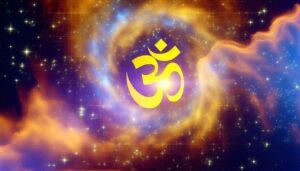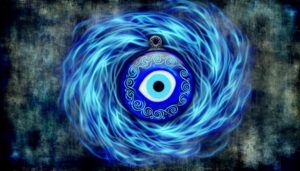Cultural Meaning of the Isle of Man Symbol
The Isle of Man's symbol, the triskelion, consists of three armored legs connected at a central point, signifying motion, continuity, and eternity. Originating from the Bronze Age, this motif embodies themes of perpetual motion and the synthesis of past, present, and future.
Its adoption by Celtic tribes and Phoenician mariners reflects a rich intercultural exchange. The triskelion's mythological roots tie to triplicity, sun worship, and warrior symbolism, signifying life, death, and rebirth.
Today, it remains a potent emblem of Manx identity, featured in art, festivals, and official insignias. These layers reveal its complex symbolism and enduring legacy.
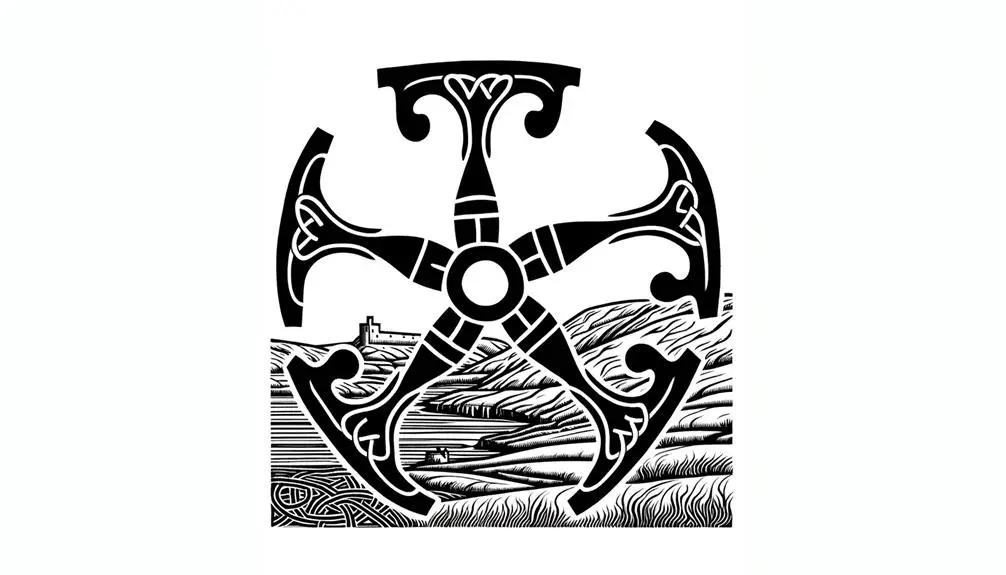
Key Takeaways
- The triskelion symbolizes motion and progress, reflecting continuity and eternity.
- It embodies the Celtic concept of triplicity, representing life, death, and rebirth.
- The triskelion signifies cultural identity and pride among the Manx people.
- It is central to traditional festivals and ceremonies on the Isle of Man.
- Its historical roots connect to ancient mythology and warrior symbolism.
Historical Origins
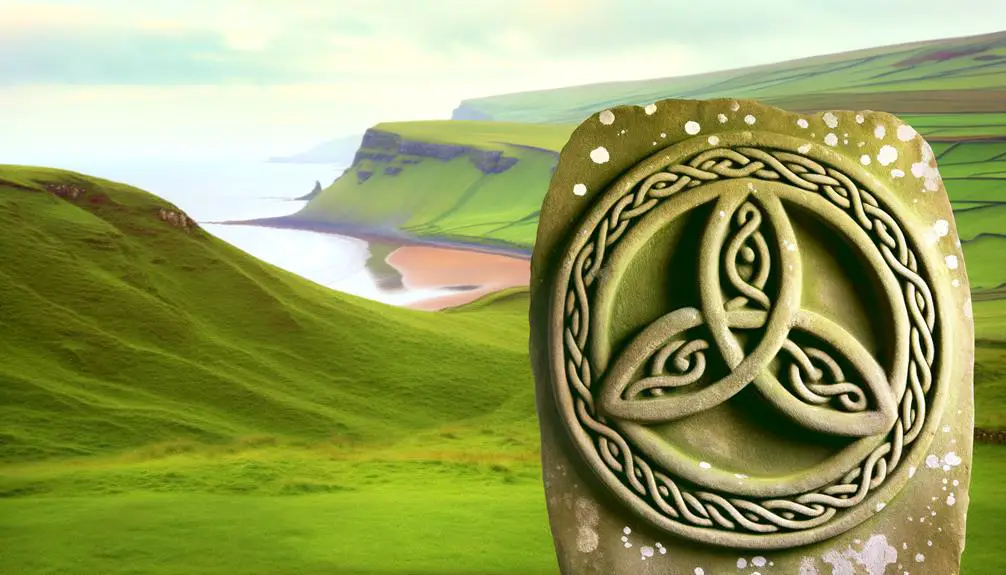
Despite its enigmatic appearance, the Isle of Man symbol, known as the triskelion, boasts a rich historical origin that can be traced back to ancient civilizations and their intricate cultural exchanges.
This emblem, characterized by three interlocking legs, first appeared in the Bronze Age, evident in Mycenaean pottery and coinage from Lycia. Scholars suggest its migration to the Isle of Man occurred through the expansive trade networks of the Mediterranean, facilitated by Phoenician mariners.
The triskelion was likely adopted by Celtic tribes, who revered it as a potent talisman. Its enduring presence on the Isle reflects the island's position as a cultural crossroads, integrating diverse influences into its unique heritage.
This synthesis underscores the emblem's deep-seated historical resonance.
Symbolism and Meaning
The triskelion's profound historical roots offer a compelling foundation for understanding its intricate symbolism and the manifold meanings it embodies within the cultural framework of the Isle of Man.
This ancient emblem, featuring three conjoined legs, epitomizes motion and progress, suggesting a dynamic interplay of unity and diversity. Its circular form implies continuity and eternity, reflecting the Isle's unbroken spirit and enduring heritage.
Additionally, the number three holds significant cultural resonance, often linked to sacred triads in Celtic lore. In this way, the triskelion transcends mere representation, embodying resilience, perpetual motion, and a synthesis of past, present, and future.
This multifaceted symbol continues to evoke a deep sense of identity and pride among the Manx people.
Mythological Roots
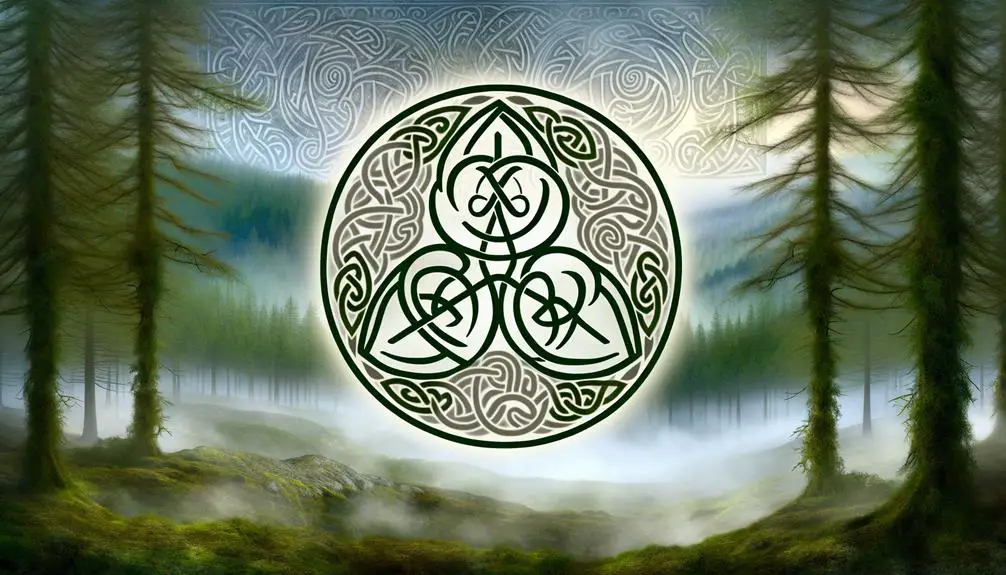
In the rich tapestry of Manx mythology, the triskelion's origins are intertwined with ancient Celtic beliefs and legends, imbuing the symbol with layers of mythological significance. This enigmatic emblem, featuring three conjoined legs, reflects various mythological themes:
- Triplicity: Signifying the triadic nature of existence, encompassing life, death, and rebirth.
- Sun Worship: Echoing solar deities, with the legs representing the sun's motion across the sky.
- Warrior Symbolism: Depicting strength and agility, akin to the swift movements of Celtic warriors.
- Cosmic Harmony: Illustrating the balance and cyclical patterns found in nature and the cosmos.
These mythological roots provide a profound understanding of the triskelion, enriching its historical and cultural context on the Isle of Man.
Cultural Significance
The cultural significance of the Isle of Man's emblem is deeply intertwined with its historical context and traditional festivals, reflecting a rich tapestry of heritage and identity.
Rooted in centuries-old traditions, the symbol serves not only as a marker of historical continuity but also as a central element in annual celebrations that reinforce communal bonds.
These practices underscore the enduring relevance of the emblem in both preserving and perpetuating the island's unique cultural legacy.
Historical Context
Rooted in antiquity, the cultural significance of the Isle of Man's symbol, the Triskelion, traces back to ancient Celtic traditions and Norse influences, reflecting a rich tapestry of historical narratives. This emblem, depicting three conjoined legs, symbolizes movement and progress, and has evolved within various cultural contexts over centuries. Its enduring presence underscores multifaceted meanings such as:
- Celtic Heritage: Representing themes of triplicity, often associated with life cycles and cosmic elements.
- Norse Integration: Illustrating the impact of Viking settlements, blending iconography and mythology.
- Medieval Adoption: Emblematic usage in heraldry and regional governance.
- Modern Identity: Serving as a national symbol, fostering a sense of unity and heritage.
These facets highlight the Triskelion's role as a dynamic cultural artifact.
Traditional Festivals
Traditional festivals on the Isle of Man, such as Hop-tu-Naa and Tynwald Day, play a pivotal role in preserving and celebrating the island's rich cultural heritage and the symbolic significance of the Triskelion.
Hop-tu-Naa, often considered the Manx Halloween, features customs that reflect ancient Celtic traditions, embodying the cyclical nature of life, resonant with the Triskelion's triadic motif.
Tynwald Day, held annually on July 5th, is a ceremonial assembly of the Manx parliament, where the Triskelion is prominently displayed, emphasizing unity and continuity.
These festivals not only reinforce communal identity but also perpetuate the island's unique symbols, ensuring the Triskelion's enduring relevance.
Through these celebrations, the Isle of Man fosters a profound connection to its historical roots and cultural symbolism.
Heraldic Uses

The heraldic uses of the Isle of Man's symbol, the Triskelion, trace back to its ancient origins, reflecting a rich tapestry of cultural and historical lineage.
This emblem, prominently featured on the Isle's coat of arms, encapsulates both the island's identity and its enduring legacy.
Today, the Triskelion continues to hold significant cultural relevance, symbolizing resilience and unity within the Manx community.
Ancient Symbol Origins
Frequently appearing in medieval heraldry, the Isle of Man's emblem, known as the triskelion, encapsulates a deep-seated historical significance that spans numerous cultures and epochs. This ancient symbol, characterized by three conjoined legs, finds its origins in various early societies, illustrating its widespread resonance and adaptability.
- Greek Antiquity: The triskelion was prevalent in Greek pottery and coinage, symbolizing motion and progress.
- Celtic Art: In Celtic traditions, it often represented the domains of land, sea, and sky, indicating a cosmic balance.
- Norse Influence: The symbol appeared in Norse artifacts, possibly signifying the cyclical nature of life.
- Sicilian Heritage: Adopted by the Kingdom of Sicily, it illustrated strength and resilience, becoming an emblem of regional identity.
These diverse applications underscore the triskelion's multifaceted heritage.
Coat of Arms
Reflecting its profound historical roots, the triskelion's incorporation into the Isle of Man's coat of arms underscores its enduring significance in heraldic traditions.
This ancient symbol, consisting of three armored legs conjoined at the thigh, emanates a powerful sense of unity and strength.
The coat of arms, featuring this triskelion, serves not merely as a decorative emblem but as a potent reminder of the island's storied past and cultural identity.
Surrounding elements in the heraldic design, such as the Gaelic motto 'Quocunque Jeceris Stabit' (Whichever way you throw it, it will stand), further amplify the resilience and steadfastness symbolized by the triskelion.
This intricate heraldic usage preserves the emblem's legacy, enriching the Isle of Man's historical narrative.
Cultural Significance Today
In contemporary times, the triskelion remains an emblem of profound cultural significance, prominently featured in various heraldic contexts to symbolize the Isle of Man's enduring heritage and identity. This ancient symbol, with its three armored legs conjoined at the thigh, continues to be a powerful representation of the island's resilience and unity.
Its heraldic uses are manifold:
- National Flag: The triskelion is central to the flag of the Isle of Man, embodying national pride.
- Official Seal: It appears in the official seal, reinforcing governmental authority and tradition.
- Civic Emblems: Many local councils incorporate the triskelion in their civic heraldry.
- Ceremonial Attire: The symbol adorns ceremonial garments, signifying continuity and respect for ancestral customs.
Through these uses, the triskelion reinforces a collective cultural identity.
Modern Representations
Modern representations of the Isle of Man symbol, also known as the triskelion, reveal a dynamic interplay between historical reverence and contemporary adaptation across various mediums.
This emblem, characterized by three armored legs conjoined at the thigh, is prominently featured in modern art, fashion, and digital media. Artists and designers often incorporate the triskelion into their work as an homage to its rich historical significance, while simultaneously infusing it with modern aesthetics.
In digital platforms, the symbol is digitized, ensuring its relevance in online branding and social media. Additionally, it is frequently used in official emblems and promotional materials, reinforcing a sense of local identity and pride.
Therefore, the triskelion remains a vibrant and evolving icon.
Comparative Analysis
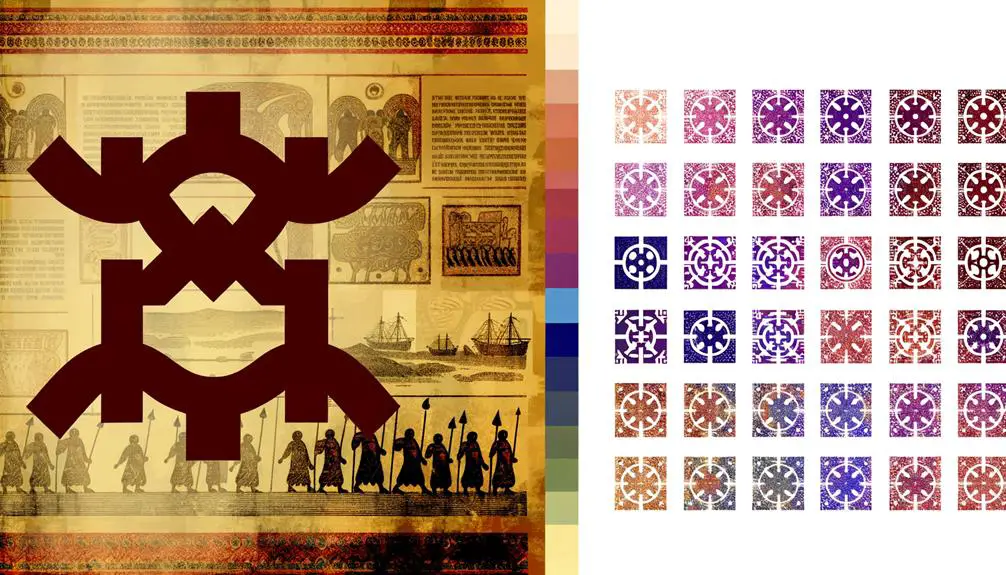
Though the Isle of Man triskelion is deeply rooted in ancient symbolism, a comparative analysis reveals distinct variations in its interpretation and usage across different historical epochs and cultural contexts. These differences underscore the symbol's dynamic nature and its capacity to adapt to diverse cultural narratives.
- Classical Antiquity: In ancient Greece, the triskelion was associated with motion, progress, and competition, frequently appearing in athletic contexts.
- Medieval Europe: During the Middle Ages, the triskelion became a heraldic emblem, symbolizing chivalry and noble lineage.
- Celtic Traditions: The Celts often viewed the triskelion as representing the triad of life, death, and rebirth, reflecting their spiritual beliefs.
- Modern Usage: Today, the triskelion is emblematic of the Isle of Man's unique cultural identity and heritage, often featured in official insignia.
This analysis highlights the triskelion's enduring relevance and multifaceted significance.
Triskelion in Art
Frequently depicted in various artistic mediums, the triskelion's representation in art provides a rich tapestry of cultural and historical resonance. This symbol, consisting of three interlocked spirals or legs, has been found in ancient artifacts, medieval manuscripts, and contemporary designs.
Its presence in Celtic art, for example, often signifies motion, progress, and cyclical patterns of life and nature. In the Isle of Man, the triskelion appears prominently on flags, coins, and public monuments, embodying resilience and unity.
Each artistic rendering, whether in sculpture, painting, or textile, encapsulates a blend of aesthetic appeal and profound meaning. The triskelion's continuous evolution in artistic expression underscores its enduring legacy and multifaceted significance across time and cultures.
Global Influences
The triskelion's pervasive influence extends beyond the Isle of Man, revealing a rich tapestry of cultural exchanges and adaptations across various global civilizations. This ancient symbol, characterized by three interlocked spirals, has found representations in numerous cultures, each imparting its unique interpretation.
For instance:
- Greek Antiquity: The triskelion appears on coins from the island of Sicily, symbolizing the three capes of the island.
- Celtic Tradition: It serves as an emblem of triplicity, embodying concepts such as life, death, and rebirth.
- Asian Influence: Similar motifs are observed in Buddhist art, symbolizing the Three Jewels of Buddhism.
- Modern Usage: Contemporary adaptations include corporate logos and pop culture references, illustrating its enduring appeal and versatility.
This cross-cultural resonance underscores the triskelion's profound and multifaceted significance.
Conclusion
The Isle of Man's symbol, the triskelion, encapsulates profound historical, mythological, and cultural significance. Its roots in ancient civilizations and enduring presence in heraldic traditions underscore its multifaceted symbolism.
While some may argue that the triskelion's meaning has evolved over time, its core representation of unity and continuity persists. This emblem, transcending regional boundaries, continues to influence global artistic expressions, affirming its timeless relevance and universal appeal within cultural and historical contexts.

